FEDERAL WAY, Washington – The Pacific Lumber Inspection Bureau (PLIB) has hired Erik Wilson as their new Executive Vice President. In this newly established leadership role, Erik will be working closely with PLIB President Jeff Fantozzi and the Board of Directors and staff directors to drive PLIB’s strategic objectives and reinforce relationships with its stakeholders, regulatory agencies, and industry partners. His responsibilities will also include staff development, brand enhancement both domestically and internationally, and the expansion of LIBs educational programs. “Appointing Erik to the EVP role accomplishes an important milestone in PLIB’s strategic and succession plans,” said PLIB President Jeff Fantozzi. His integrity and wide-ranging industry experience brings valuable depth and expertise to our already exceptional team. We are extremely excited about this new chapter in PLIB’s evolution.”



 EUGENE, Oregon — President Trump’s demand that the US increase timber output by a quarter is running into a math problem: Lumber companies may not make as much money on wood in the coming months. A steep drop in lumber futures prices nationally is jolting the wood products business just as the Trump administration is prodding the industry — including the government’s own forest managers — to ramp up production so the US doesn’t have to rely on imports. Futures prices on lumber at the end of last week dipped to $527 per MFBM, the lowest point in a year. For Weyerhaeuser, which operates a mill in Cottage Grove, Oregon, the pricing signal isn’t sounding alarms just yet. The mill’s in the middle of a multiyear modernization said representatives who figure the market is doing one of its usual seesaws. [to access the full story an E&E News subscription is required]
EUGENE, Oregon — President Trump’s demand that the US increase timber output by a quarter is running into a math problem: Lumber companies may not make as much money on wood in the coming months. A steep drop in lumber futures prices nationally is jolting the wood products business just as the Trump administration is prodding the industry — including the government’s own forest managers — to ramp up production so the US doesn’t have to rely on imports. Futures prices on lumber at the end of last week dipped to $527 per MFBM, the lowest point in a year. For Weyerhaeuser, which operates a mill in Cottage Grove, Oregon, the pricing signal isn’t sounding alarms just yet. The mill’s in the middle of a multiyear modernization said representatives who figure the market is doing one of its usual seesaws. [to access the full story an E&E News subscription is required]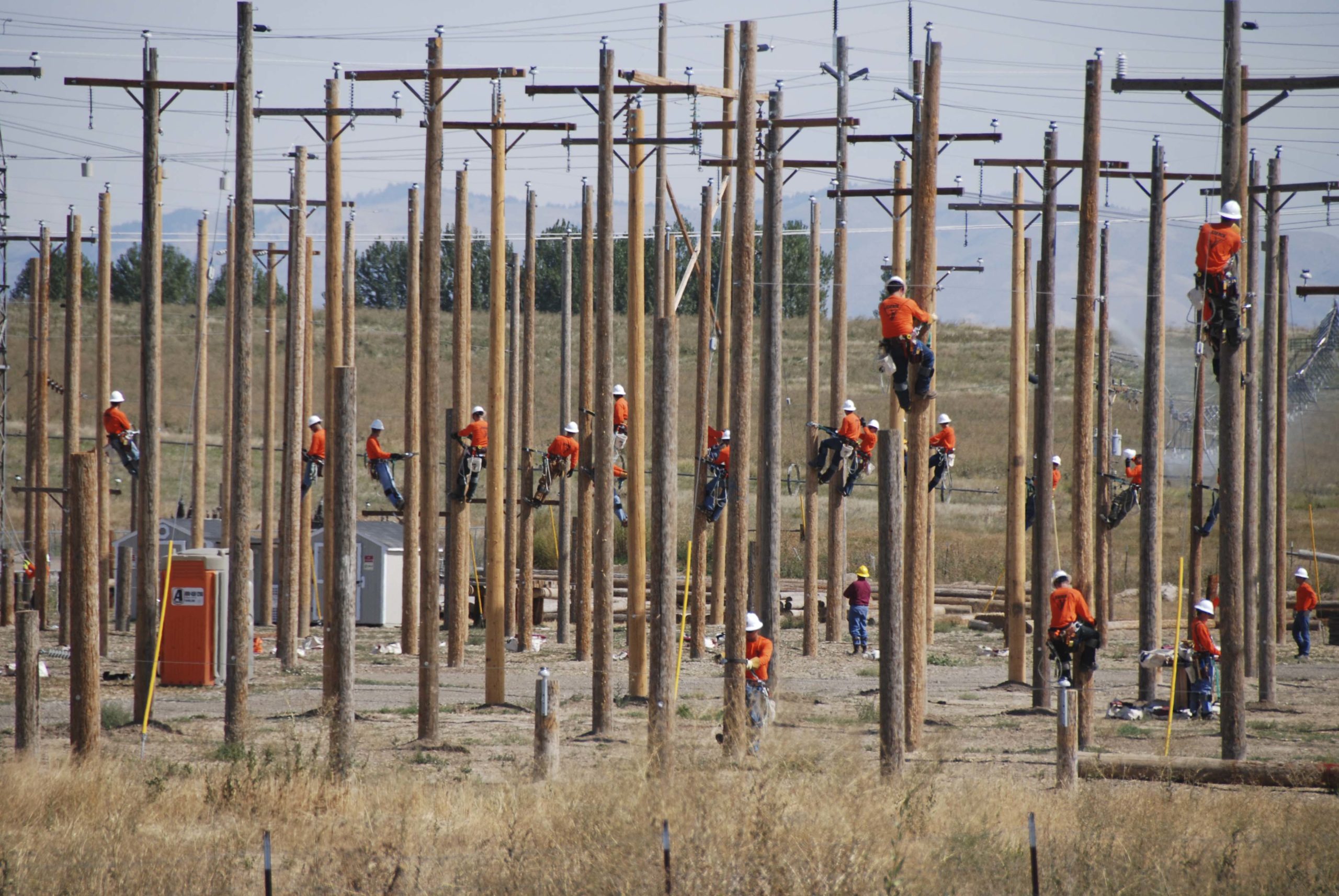 SHERIDAN, Oregon — The Oregon Department of Environmental Quality (DEQ) has fined a Yamhill County wood treating company $1,055,825 for numerous violations of environmental regulations for water quality, hazardous waste and spill response and cleanup.
SHERIDAN, Oregon — The Oregon Department of Environmental Quality (DEQ) has fined a Yamhill County wood treating company $1,055,825 for numerous violations of environmental regulations for water quality, hazardous waste and spill response and cleanup. 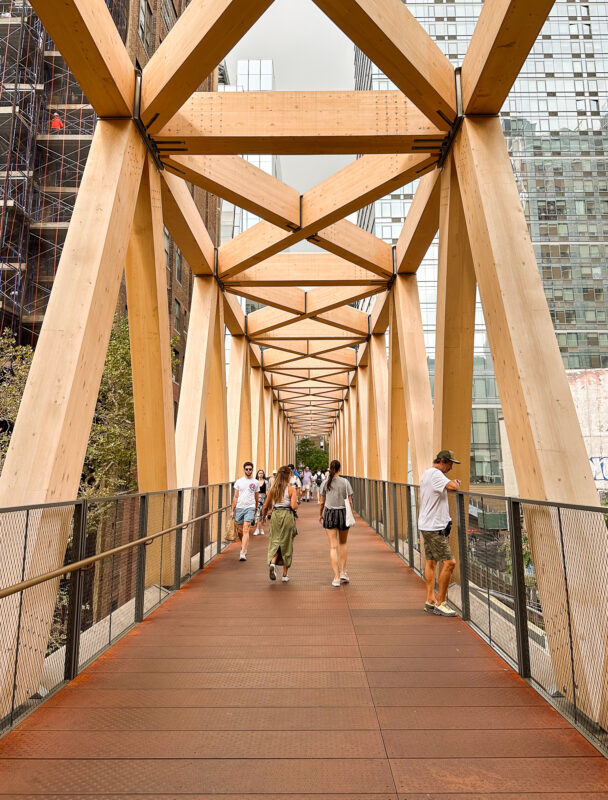
 Despite the Trump administration’s pledge to aggressively clear overgrowth from national forests, the U.S. Forest Service is falling significantly short on wildfire mitigation work. By mid-September, the agency had only treated about 2.2 million acres through thinning and prescribed burns. That’s far short of the over 4 million acres treated during the last year of the Biden administration, and it’s also behind the agency’s annual average over the past decade. Forest Service Chief Tom Schultz blamed “operational challenges” and said agency resources were diverted to help battle blazes in Canada. However, Senator Ron Wyden of Oregon is blaming the slowdown in fuel treatments on the Trump administration firing thousands of Forest Service employees earlier this year. …the government shutdown has stopped wildfire prevention efforts across the country’s entire 193 million acres of national forest land [at] the ideal time for the agency to conduct safe prescribed burns across the West.
Despite the Trump administration’s pledge to aggressively clear overgrowth from national forests, the U.S. Forest Service is falling significantly short on wildfire mitigation work. By mid-September, the agency had only treated about 2.2 million acres through thinning and prescribed burns. That’s far short of the over 4 million acres treated during the last year of the Biden administration, and it’s also behind the agency’s annual average over the past decade. Forest Service Chief Tom Schultz blamed “operational challenges” and said agency resources were diverted to help battle blazes in Canada. However, Senator Ron Wyden of Oregon is blaming the slowdown in fuel treatments on the Trump administration firing thousands of Forest Service employees earlier this year. …the government shutdown has stopped wildfire prevention efforts across the country’s entire 193 million acres of national forest land [at] the ideal time for the agency to conduct safe prescribed burns across the West. Roughly 500 years ago in California’s High Sierra, pine cones dropped to the ground and a cycle began. …Half a millennia later, US Forest Service scientists began testing strategies to save these now ancient and massive trees in the little-known area east of Fresno called the Teakettle Experimental Forest. They had plans to light a huge prescribed burn to clear overgrowth next year. But then the Garnet Fire ignited and scorched all 3,000 federally protected acres on its path through the Sierra National Forest. …Scott Scherbinski, a biologist at the Climate & Wildfire Institute, said “It will be a start-over event for this forest.” …Malcolm North, a Forest Service ecologist said…fires with less intensity can be beneficial in California’s fire-adapted landscapes, but the Garnet Fire, when it burned through in September, may have killed most trees and sterilized the ground — making it unlikely the forest can rebound without intervention. [to access the full story a San Francisco Chronicle subscription is required]
Roughly 500 years ago in California’s High Sierra, pine cones dropped to the ground and a cycle began. …Half a millennia later, US Forest Service scientists began testing strategies to save these now ancient and massive trees in the little-known area east of Fresno called the Teakettle Experimental Forest. They had plans to light a huge prescribed burn to clear overgrowth next year. But then the Garnet Fire ignited and scorched all 3,000 federally protected acres on its path through the Sierra National Forest. …Scott Scherbinski, a biologist at the Climate & Wildfire Institute, said “It will be a start-over event for this forest.” …Malcolm North, a Forest Service ecologist said…fires with less intensity can be beneficial in California’s fire-adapted landscapes, but the Garnet Fire, when it burned through in September, may have killed most trees and sterilized the ground — making it unlikely the forest can rebound without intervention. [to access the full story a San Francisco Chronicle subscription is required]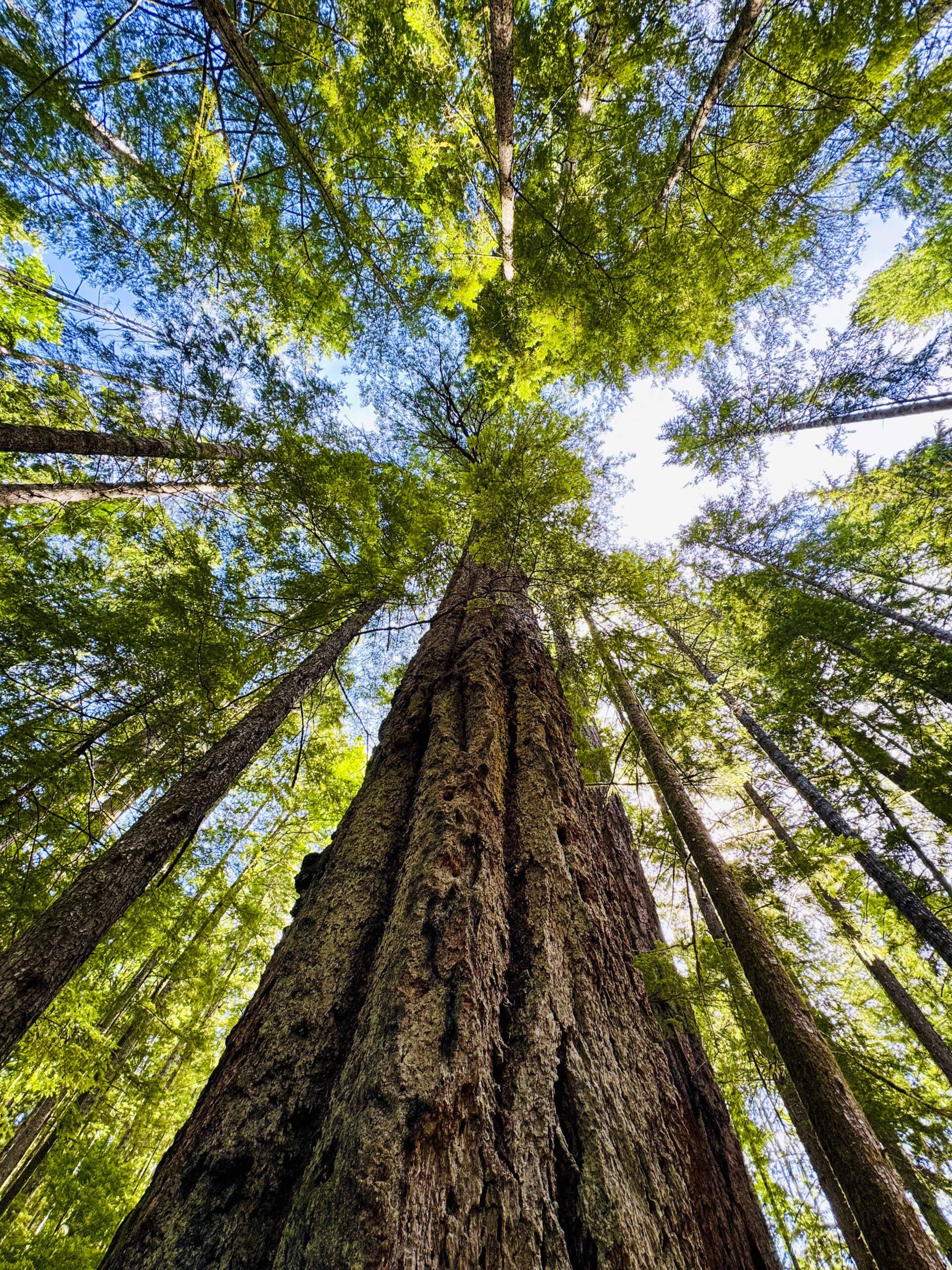 Drought and insects have killed an unprecedented number of Oregon’s Douglas fir trees during the last decade, costing billions in timber value, damaging infrastructure and ramping up wildfire danger. Beginning in 2015 and accelerating with the 2021 heat dome, roughly 635,000 acres of forest have been impacted by what’s known as Douglas fir “dieback” in southwest Oregon and the Willamette Valley. “It’s hitting trees of all sizes, but it’s hitting larger and older trees the hardest,” Max Bennett, a retired forest researcher with Oregon State University, told members of the Oregon Legislature on Sept. 30. “What we’re seeing now is unprecedented.” The dieback has led to $1.1 billion in lost timber value, $500 million in potential road hazard costs and created a tinderbox of forest fuel capable of spawning the West’s most destructive wildfires, a group of foresters and researchers told the House Committee on Agriculture, Land Use, Natural Resources and Water.
Drought and insects have killed an unprecedented number of Oregon’s Douglas fir trees during the last decade, costing billions in timber value, damaging infrastructure and ramping up wildfire danger. Beginning in 2015 and accelerating with the 2021 heat dome, roughly 635,000 acres of forest have been impacted by what’s known as Douglas fir “dieback” in southwest Oregon and the Willamette Valley. “It’s hitting trees of all sizes, but it’s hitting larger and older trees the hardest,” Max Bennett, a retired forest researcher with Oregon State University, told members of the Oregon Legislature on Sept. 30. “What we’re seeing now is unprecedented.” The dieback has led to $1.1 billion in lost timber value, $500 million in potential road hazard costs and created a tinderbox of forest fuel capable of spawning the West’s most destructive wildfires, a group of foresters and researchers told the House Committee on Agriculture, Land Use, Natural Resources and Water.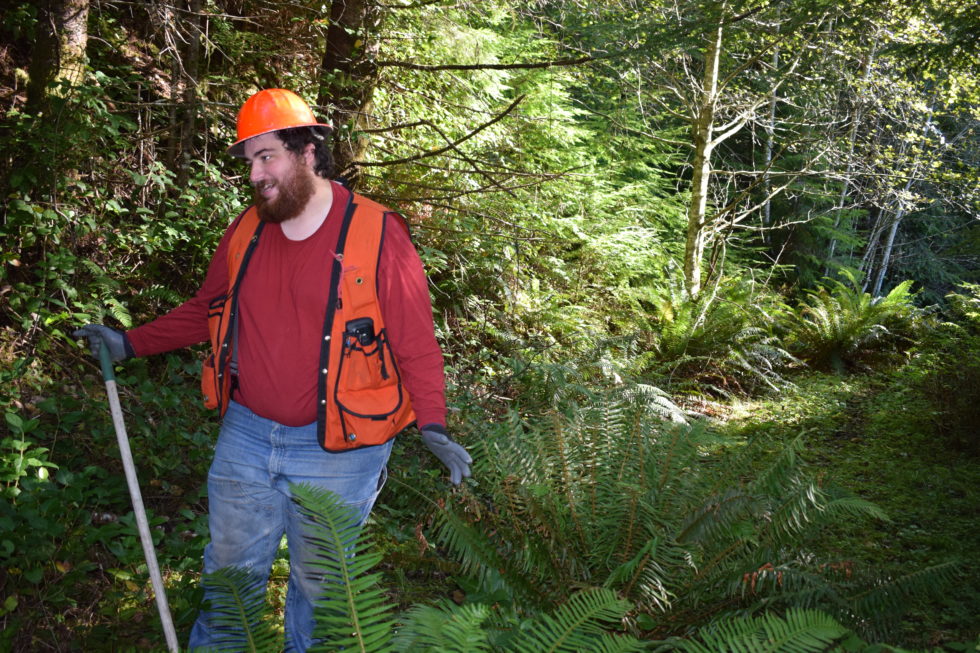
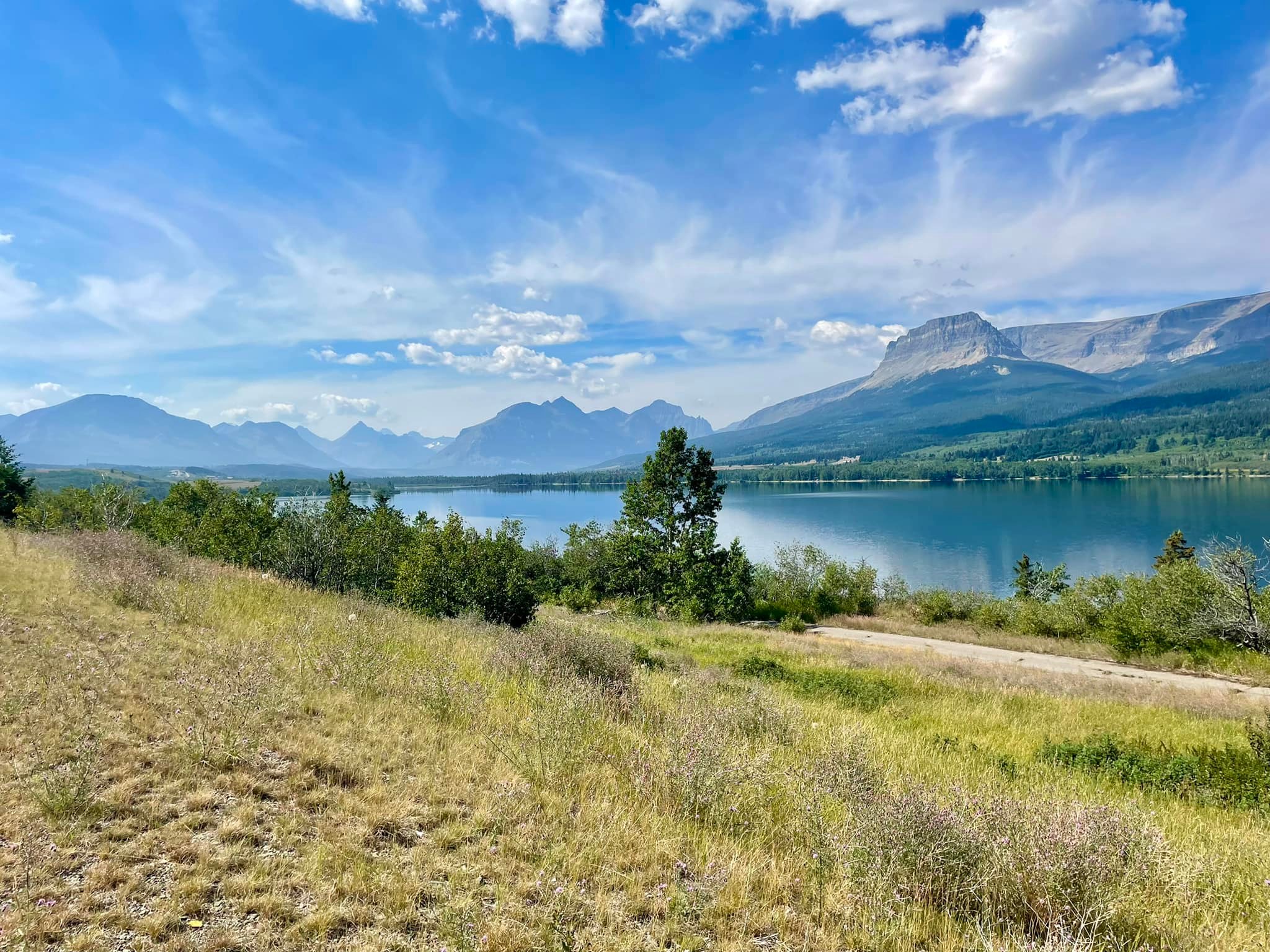 A coalition of conservation groups’ attempt to stop a forest project in Montana’s Bitterroot National Forest fell flat on Tuesday when a magistrate judge recommended the court toss their claims. In her findings and recommendations, U.S. Magistrate Judge Kathleen DeSoto noted inconsistencies in the conservation groups’ arguments across different filings, leading to many of their claims being waived. “Therefore, defendants argue, plaintiffs have conceded these issues,” DeSoto wrote. “Defendants further point out that several of plaintiffs’ arguments are raised for the first time on reply.” The groups challenged the planned Mud Creek Vegetation Management Project, claiming it violates multiple federal conservation acts by failing to provide exact details of where logging and burning will take place, as well as what effects it will have on the environment. The project will include logging, thinning, controlled burns and road construction on 48,000 acres of federal forest. It is intended to mitigate wildfire risk.
A coalition of conservation groups’ attempt to stop a forest project in Montana’s Bitterroot National Forest fell flat on Tuesday when a magistrate judge recommended the court toss their claims. In her findings and recommendations, U.S. Magistrate Judge Kathleen DeSoto noted inconsistencies in the conservation groups’ arguments across different filings, leading to many of their claims being waived. “Therefore, defendants argue, plaintiffs have conceded these issues,” DeSoto wrote. “Defendants further point out that several of plaintiffs’ arguments are raised for the first time on reply.” The groups challenged the planned Mud Creek Vegetation Management Project, claiming it violates multiple federal conservation acts by failing to provide exact details of where logging and burning will take place, as well as what effects it will have on the environment. The project will include logging, thinning, controlled burns and road construction on 48,000 acres of federal forest. It is intended to mitigate wildfire risk. OREGON — George Sexton said he’s attended a couple dozen timber auctions during his 23 years as conservation director at KS Wild, an Ashland-based environmental group. But when he showed up at the Bureau of Land Management office in Medford on Sept. 25 for a timber auction, he, a lawyer and a reporter for Jefferson Public Radio were not allowed to enter. Sexton said that for years, he’s attended the auctions to observe and make sure BLM follows its laws and that bidders know about potential lawsuits. In this case, KS Wild is planning litigation to stop the “Take A Chance” timber sale, one of the four that was being offered. Sexton said the public has only been blocked from the meetings recently, coinciding with the Trump administration’s focus on increasing logging. BLM said closing timber auctions isn’t a new policy and that it was never intended as a “public meeting.”
OREGON — George Sexton said he’s attended a couple dozen timber auctions during his 23 years as conservation director at KS Wild, an Ashland-based environmental group. But when he showed up at the Bureau of Land Management office in Medford on Sept. 25 for a timber auction, he, a lawyer and a reporter for Jefferson Public Radio were not allowed to enter. Sexton said that for years, he’s attended the auctions to observe and make sure BLM follows its laws and that bidders know about potential lawsuits. In this case, KS Wild is planning litigation to stop the “Take A Chance” timber sale, one of the four that was being offered. Sexton said the public has only been blocked from the meetings recently, coinciding with the Trump administration’s focus on increasing logging. BLM said closing timber auctions isn’t a new policy and that it was never intended as a “public meeting.”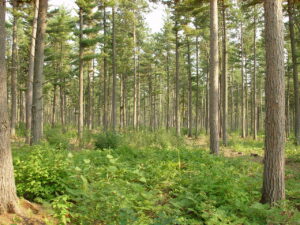 WASHINGTON — Tribal lands in the Pacific Northwest are earning national recognition for something the US Forest Service has struggled to achieve: healthy, resilient forests. …Their success is rooted in thousands of years of stewardship and a willingness to act where federal policy too often stalls. Long before European colonization, Indigenous people actively managed forests through cultural burning and selective thinning. “In my neck of the woods, there was a five to 15 year fire return interval that was clearly from tribal management,” said Cody Desautel, of the Confederated Tribes of the Colville Reservation, which extends across Washington and into British Columbia, Oregon, and Idaho. …“When you’re not managing these forest types like they were previously managed, Mother Nature is going to have a course correction and reset the clock,” said Steve Rigdon, tribal partnership stewardship and resource manager at Sustainable Northwest. That course correction has arrived.
WASHINGTON — Tribal lands in the Pacific Northwest are earning national recognition for something the US Forest Service has struggled to achieve: healthy, resilient forests. …Their success is rooted in thousands of years of stewardship and a willingness to act where federal policy too often stalls. Long before European colonization, Indigenous people actively managed forests through cultural burning and selective thinning. “In my neck of the woods, there was a five to 15 year fire return interval that was clearly from tribal management,” said Cody Desautel, of the Confederated Tribes of the Colville Reservation, which extends across Washington and into British Columbia, Oregon, and Idaho. …“When you’re not managing these forest types like they were previously managed, Mother Nature is going to have a course correction and reset the clock,” said Steve Rigdon, tribal partnership stewardship and resource manager at Sustainable Northwest. That course correction has arrived. IDAHO — After a slew of firings and deferred resignations last winter, the loss of federal workers left holes throughout the Northwest. “When we get to peak fire season, it’s kind of an all-hands-on-deck call, if you will,” said Jim Wimer, a fire prevention officer for the Nez Perce-Clearwater National Forests. US Forest Service employees who are normally in the office — like wildlife biologists or hydrologists — jumped in to help with fire information this summer, he said. …Workers even drove trucks with supplies to wildfires, often working overtime to help, he said. Not only does it help local fire efforts, but it also gets people out to other parts of the country to gain unique experiences and helps other forests that are in similar situations, Wimer said. …This year, there have been 364 fires on land the agency manages, but not a lot of acreage burned, he said.
IDAHO — After a slew of firings and deferred resignations last winter, the loss of federal workers left holes throughout the Northwest. “When we get to peak fire season, it’s kind of an all-hands-on-deck call, if you will,” said Jim Wimer, a fire prevention officer for the Nez Perce-Clearwater National Forests. US Forest Service employees who are normally in the office — like wildlife biologists or hydrologists — jumped in to help with fire information this summer, he said. …Workers even drove trucks with supplies to wildfires, often working overtime to help, he said. Not only does it help local fire efforts, but it also gets people out to other parts of the country to gain unique experiences and helps other forests that are in similar situations, Wimer said. …This year, there have been 364 fires on land the agency manages, but not a lot of acreage burned, he said.



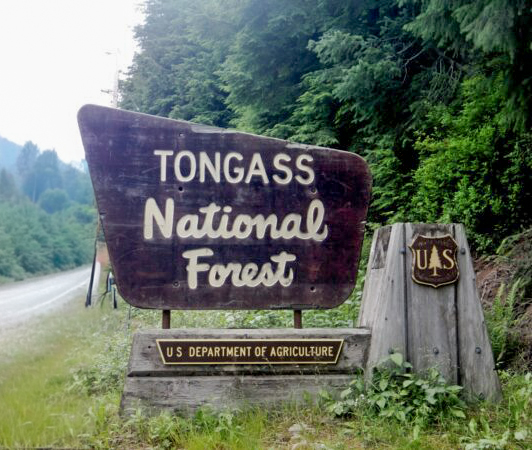 The U.S. Department of Agriculture announced this summer it was moving to rescind the Roadless Rule, a 2001 law that protects large swaths of National Forest land from development. That includes more than half of the Tongass National Forest, where Juneau is located. On Saturday, more than 100 people gathered in the state capital to protest the move. …Alaska’s Congressional delegation unanimously supports the rollback of the Roadless Rule. U.S. Sen. Lisa Murkowski has said that most of the Tongass would still be protected without it — the parts of the forest that are already designated as wilderness. …But protesters say Alaskans have more to lose in risks to the land and waterways than what they have to gain through further development. Lingít elders and fishing and tourism industry experts took the mic Saturday to deliver a message: the Roadless Rule should be left alone.
The U.S. Department of Agriculture announced this summer it was moving to rescind the Roadless Rule, a 2001 law that protects large swaths of National Forest land from development. That includes more than half of the Tongass National Forest, where Juneau is located. On Saturday, more than 100 people gathered in the state capital to protest the move. …Alaska’s Congressional delegation unanimously supports the rollback of the Roadless Rule. U.S. Sen. Lisa Murkowski has said that most of the Tongass would still be protected without it — the parts of the forest that are already designated as wilderness. …But protesters say Alaskans have more to lose in risks to the land and waterways than what they have to gain through further development. Lingít elders and fishing and tourism industry experts took the mic Saturday to deliver a message: the Roadless Rule should be left alone.
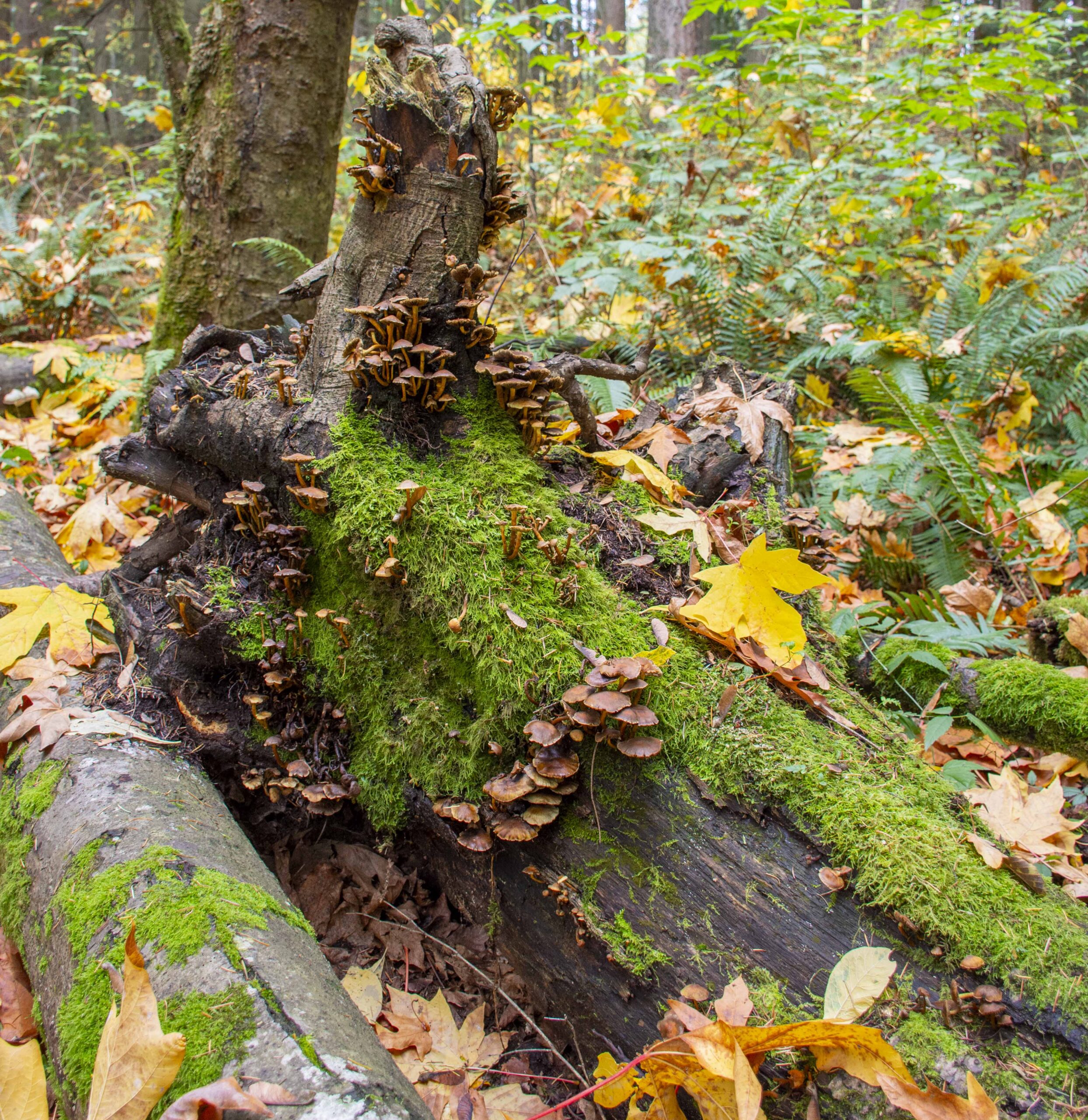 Mark Harmon, a longtime faculty member at Oregon State University, has been watching number 219, and more than 500 other logs nearby, decay for 40 years. He has trekked to this site in the H. J. Andrews Experimental Forest, a watershed nestled in Oregon’s western Cascade Mountains, at least 100 times. His goal: establish an exhaustive baseline dataset that any scientist could use to test hypotheses about tree decomposition or to compare patterns of decomposition in the Pacific Northwest with those in other regions. …In a 2020 analysis, Harmon and his colleagues estimated that decay rates can vary by a whopping 244-fold across species and climates. …Scientists used to assume that decomposition was instantaneous, Harmon says—that when a tree dies, it essentially disappears. “But that’s not true anywhere on Earth, and it’s never been true,” he says. A dead tree is “just a transition to something else.”
Mark Harmon, a longtime faculty member at Oregon State University, has been watching number 219, and more than 500 other logs nearby, decay for 40 years. He has trekked to this site in the H. J. Andrews Experimental Forest, a watershed nestled in Oregon’s western Cascade Mountains, at least 100 times. His goal: establish an exhaustive baseline dataset that any scientist could use to test hypotheses about tree decomposition or to compare patterns of decomposition in the Pacific Northwest with those in other regions. …In a 2020 analysis, Harmon and his colleagues estimated that decay rates can vary by a whopping 244-fold across species and climates. …Scientists used to assume that decomposition was instantaneous, Harmon says—that when a tree dies, it essentially disappears. “But that’s not true anywhere on Earth, and it’s never been true,” he says. A dead tree is “just a transition to something else.”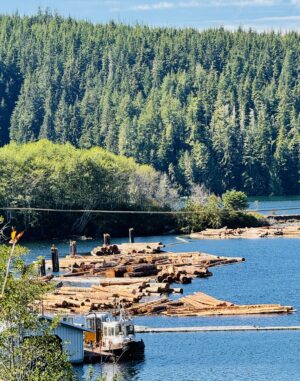 The Trump administration is looking to finalize a repeal of a longstanding Roadless Rule with a public comment period that
The Trump administration is looking to finalize a repeal of a longstanding Roadless Rule with a public comment period that 
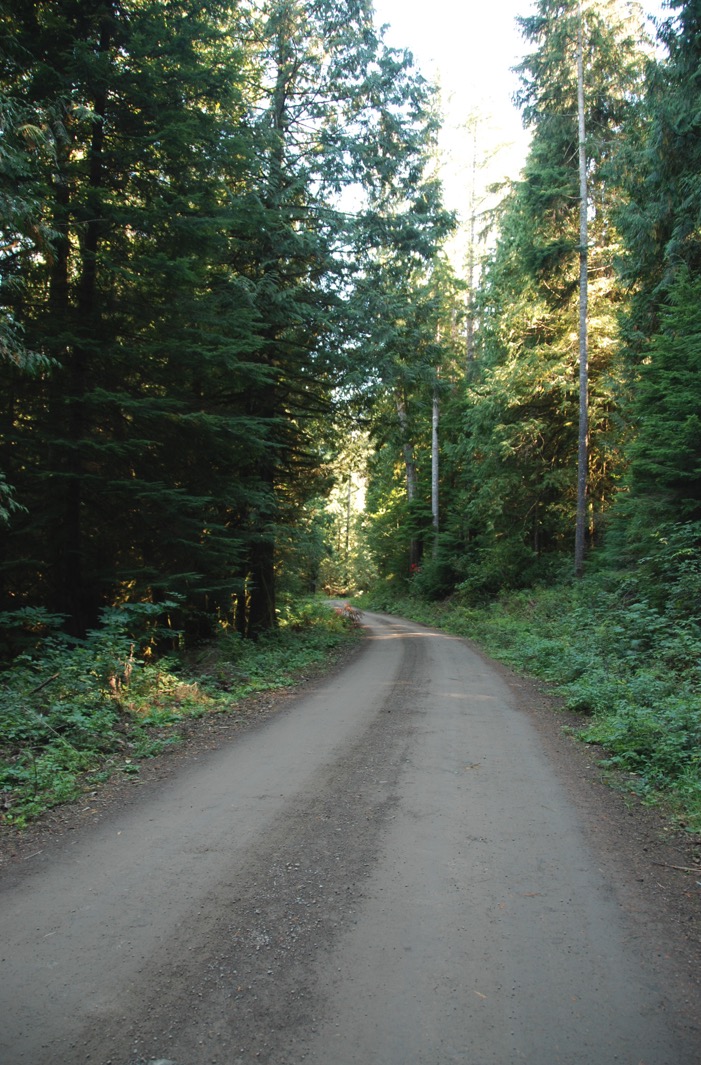 President Donald Trump’s Secretary of Agriculture has moved to rescind the “roadless rule” that protects portions of national forests from development — including 4.4 million acres in California — and members of the public can still submit comments about the change to the federal government. Every national forest in California would be affected. Commenters can weigh in through the online form on regulations.gov through Sept. 19; the docket is FS-2025-0001-0001. Since 2001, the roadless rule has protected designated areas from development and logging, limiting or barring the construction or reconstruction of roads. About 21% of California’s national forestlands are protected. Throughout the U.S., the 2001 rule covers 59 million acres. The administration has said the move to end the rule would open up these forests to more logging and has said that more roads would help with wildfire prevention. As NPR reported, the U.S. Forest Service has previously found that roads appeared to do nothing to mitigate wildfires.
President Donald Trump’s Secretary of Agriculture has moved to rescind the “roadless rule” that protects portions of national forests from development — including 4.4 million acres in California — and members of the public can still submit comments about the change to the federal government. Every national forest in California would be affected. Commenters can weigh in through the online form on regulations.gov through Sept. 19; the docket is FS-2025-0001-0001. Since 2001, the roadless rule has protected designated areas from development and logging, limiting or barring the construction or reconstruction of roads. About 21% of California’s national forestlands are protected. Throughout the U.S., the 2001 rule covers 59 million acres. The administration has said the move to end the rule would open up these forests to more logging and has said that more roads would help with wildfire prevention. As NPR reported, the U.S. Forest Service has previously found that roads appeared to do nothing to mitigate wildfires.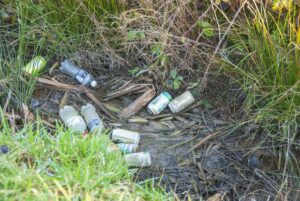 LINCOLN COUNTY, Oregon — Travelers exploring private timber lands along the Oregon Coast may encounter locked gates or restricted access, but this is not due to a desire to keep citizens off the property, the Lincoln County Sheriff’s Office said. The closures are a response to increasing incidents of littering, vehicle abandonment, theft of forest products, and criminal mischief. Common acts of vandalism include property destruction by 4x4s and ATVs in unauthorized areas and damage to road access gates, officials said. These actions not only destroy the natural beauty of the forests but also incur costs for cleanup and repairs, which are paid by private timber companies and taxpayers.
LINCOLN COUNTY, Oregon — Travelers exploring private timber lands along the Oregon Coast may encounter locked gates or restricted access, but this is not due to a desire to keep citizens off the property, the Lincoln County Sheriff’s Office said. The closures are a response to increasing incidents of littering, vehicle abandonment, theft of forest products, and criminal mischief. Common acts of vandalism include property destruction by 4x4s and ATVs in unauthorized areas and damage to road access gates, officials said. These actions not only destroy the natural beauty of the forests but also incur costs for cleanup and repairs, which are paid by private timber companies and taxpayers.
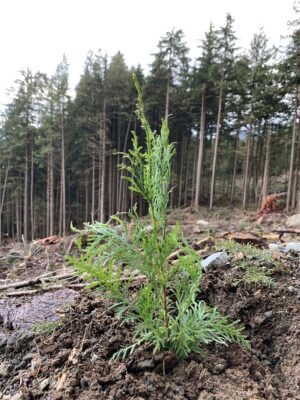 The increase in wildfires over the past few decades is changing the Colorado landscape in more ways than one. Not only do fires temporarily decimate the impacted areas but according to research out of Colorado State University, they are actually changing how, and if, forests regenerate post fire. “There are definitely some places where they’re coming back really well; it just takes a long time for trees to grow back,” said Camille Stevens-Rumann, CSU associate professor of Forest and Rangeland Stewardship. “But there are definitely other places that are not recovering and are not turning back into the forests that we expect them to be. …Reseeding efforts in these locations have shown mixed results, forcing researchers and forestry officials to look at alternative species. …“I think we do have to adapt and think about the fact that those forests are going to look differently.”
The increase in wildfires over the past few decades is changing the Colorado landscape in more ways than one. Not only do fires temporarily decimate the impacted areas but according to research out of Colorado State University, they are actually changing how, and if, forests regenerate post fire. “There are definitely some places where they’re coming back really well; it just takes a long time for trees to grow back,” said Camille Stevens-Rumann, CSU associate professor of Forest and Rangeland Stewardship. “But there are definitely other places that are not recovering and are not turning back into the forests that we expect them to be. …Reseeding efforts in these locations have shown mixed results, forcing researchers and forestry officials to look at alternative species. …“I think we do have to adapt and think about the fact that those forests are going to look differently.”
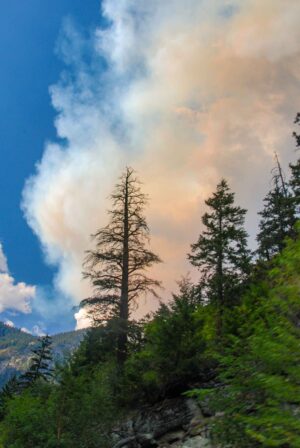 The western United States is facing another destructive wildfire season. …As US forests burn, Congress and federal agencies are asking an important question: What role should federal land management play in reducing fire risk? …Several of the current federal proposals for managing fire risk focus on increasing timber harvesting on federal lands as a solution. They also propose speeding up approvals for those projects by limiting environmental reviews and public oversight. As experts in fire science and policy, we see some useful ideas in the proposed solutions, but also reasons for concern. While cutting trees can help reduce the severity of future fires, it has to include thinning in the right places to make a difference. Without oversight and public involvement, increasing logging could skip areas with low-value trees that need thinning and miss opportunities for more effective fire risk-reduction work.
The western United States is facing another destructive wildfire season. …As US forests burn, Congress and federal agencies are asking an important question: What role should federal land management play in reducing fire risk? …Several of the current federal proposals for managing fire risk focus on increasing timber harvesting on federal lands as a solution. They also propose speeding up approvals for those projects by limiting environmental reviews and public oversight. As experts in fire science and policy, we see some useful ideas in the proposed solutions, but also reasons for concern. While cutting trees can help reduce the severity of future fires, it has to include thinning in the right places to make a difference. Without oversight and public involvement, increasing logging could skip areas with low-value trees that need thinning and miss opportunities for more effective fire risk-reduction work. 
 Today’s Lookout
Today’s Lookout  WASHINGTON — The US Supreme Court on Monday declined to hear a high-profile challenge to Washington’s Climate Commitment Act, marking yet another victory for the state’s keystone climate policy. The lawsuit started with the private operator of a natural gas power plant in Grays Harbor County. The plant is required to buy pollution allowances to pay for the many tons of greenhouse gasses it emits into the atmosphere under the 2021 “Cap and Invest” law. The plant’s owner, Chicago-based Invenergy, sued Laura Watson, then-head of Washington’s Department of Ecology, in late 2022, arguing that the state’s carbon market is unconstitutional. The lawsuit claimed that the state law discriminated against privately operated natural gas plants. In 2023, US District Court Judge Benjamin Settle dismissed the case. The company appealed. …The Supreme Court on Monday denied Invenergy’s petition outright. The justices did not publish any written justification for their decision.
WASHINGTON — The US Supreme Court on Monday declined to hear a high-profile challenge to Washington’s Climate Commitment Act, marking yet another victory for the state’s keystone climate policy. The lawsuit started with the private operator of a natural gas power plant in Grays Harbor County. The plant is required to buy pollution allowances to pay for the many tons of greenhouse gasses it emits into the atmosphere under the 2021 “Cap and Invest” law. The plant’s owner, Chicago-based Invenergy, sued Laura Watson, then-head of Washington’s Department of Ecology, in late 2022, arguing that the state’s carbon market is unconstitutional. The lawsuit claimed that the state law discriminated against privately operated natural gas plants. In 2023, US District Court Judge Benjamin Settle dismissed the case. The company appealed. …The Supreme Court on Monday denied Invenergy’s petition outright. The justices did not publish any written justification for their decision.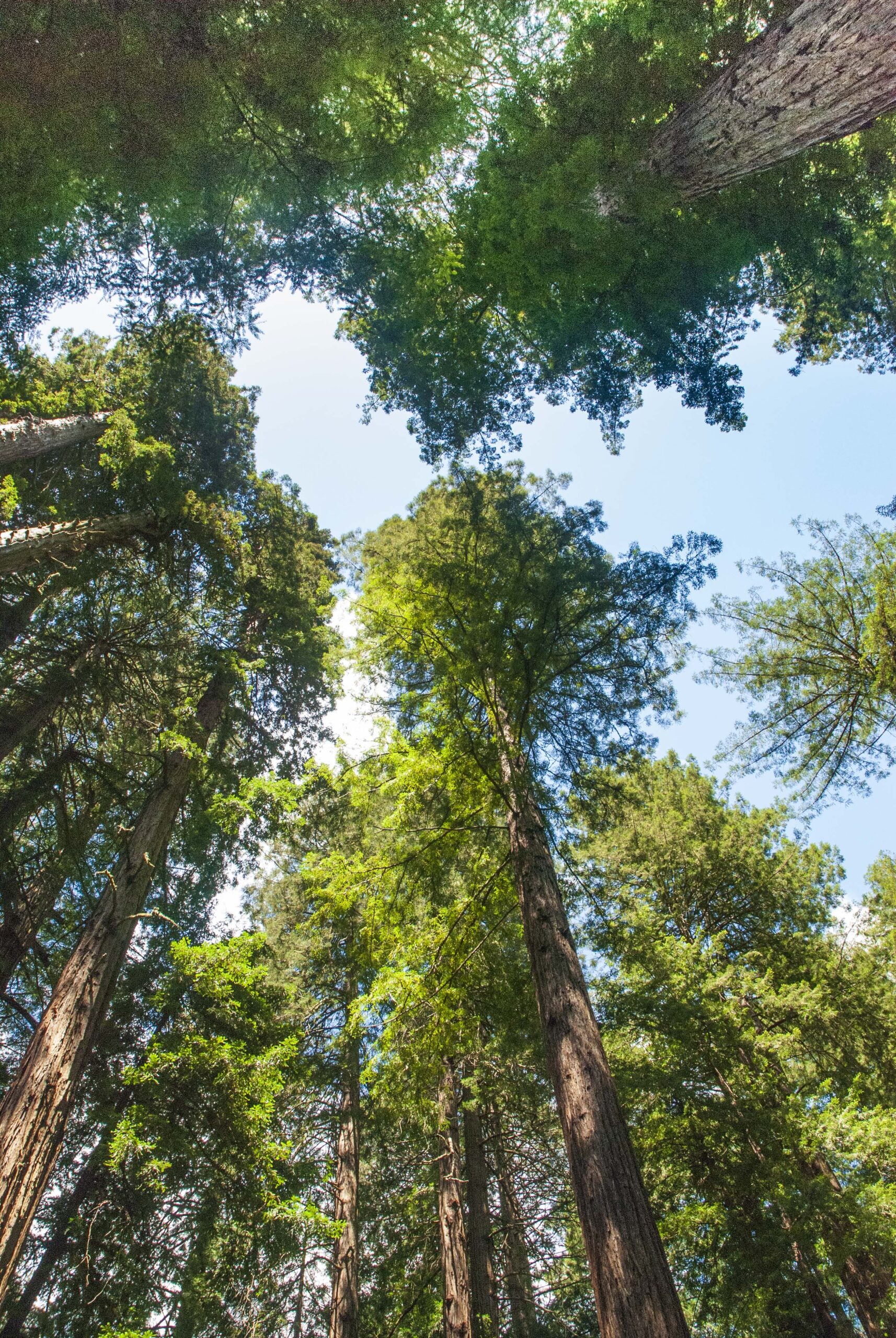 Storing carbon in forests is an essential, nature-based buffer against climate change. Yet forests packed with too many trees increase the threat of severe wildfires… A team of UC Merced and collaborating researchers evaluated the tradeoffs between two seemingly opposing scenarios: Trees are critical because they pull carbon dioxide from the air, preventing carbon from adding to greenhouse effects that trap heat and warm the atmosphere; and the increasing severity and danger of wildfires call for the thinning of overly dense forests. The researchers found that the best approach is a combination of both.
Storing carbon in forests is an essential, nature-based buffer against climate change. Yet forests packed with too many trees increase the threat of severe wildfires… A team of UC Merced and collaborating researchers evaluated the tradeoffs between two seemingly opposing scenarios: Trees are critical because they pull carbon dioxide from the air, preventing carbon from adding to greenhouse effects that trap heat and warm the atmosphere; and the increasing severity and danger of wildfires call for the thinning of overly dense forests. The researchers found that the best approach is a combination of both.  EASTERN OREGON — More than $7.4 million to support removal and transport of 417,308 tons of low-value trees and woody debris from national forests to processing facilities is being allocated to Eastern Oregon forests. The allocation includes a critical $4.6 million award to support the forest products industry in Grant County. Two other projects are in or near Wallowa County, Oregon’s US Sens. Ron Wyden and Jeff Merkley announced Friday, Sept. 19. This $7.4 million investment from the U.S. Forest Service’s Hazardous Fuels Transportation Assistance Program will be distributed as follows: Heartwood Biomass Inc. in Wallowa: $773,031; Boise Cascade Wood Products LLC in Elgin: $385,138; Iron Triangle LLC in John Day: $4,665,063;Dodge Logging Inc. in Maupin: $648,000; Gilchrist Forest Products LLC in Gilchrist: $588,648; Rude Logging LLC in John Day: $410,748.
EASTERN OREGON — More than $7.4 million to support removal and transport of 417,308 tons of low-value trees and woody debris from national forests to processing facilities is being allocated to Eastern Oregon forests. The allocation includes a critical $4.6 million award to support the forest products industry in Grant County. Two other projects are in or near Wallowa County, Oregon’s US Sens. Ron Wyden and Jeff Merkley announced Friday, Sept. 19. This $7.4 million investment from the U.S. Forest Service’s Hazardous Fuels Transportation Assistance Program will be distributed as follows: Heartwood Biomass Inc. in Wallowa: $773,031; Boise Cascade Wood Products LLC in Elgin: $385,138; Iron Triangle LLC in John Day: $4,665,063;Dodge Logging Inc. in Maupin: $648,000; Gilchrist Forest Products LLC in Gilchrist: $588,648; Rude Logging LLC in John Day: $410,748. A firefighter from Minnesota died Friday while helping the United States Forest Service with a controlled burn in Idaho, officials say. The Idaho Department of Lands (IDL) says Isabella Oscarson had been struck by a falling tree while assisting the U.S. Forest Service’s Tinker Bugs with a prescribed fire in the Nez Perce-Clearwater National Forests. She was evacuated from the scene and flown to a hospital in Grangeville, Idaho, where she later died. Oscarson was a seasonal employee with the IDL. “IDL extends its deepest sympathies to Isabella’s family and friends. This is a tragedy that hits the employees at Idaho Department of Lands and the broader wildland fire community extremely hard,” Dustin Miller, director of IDL, said. Idaho Gov. Brad Little ordered flags to be lowered to half-staff to honor Oscarson until the day following her memorial service.
A firefighter from Minnesota died Friday while helping the United States Forest Service with a controlled burn in Idaho, officials say. The Idaho Department of Lands (IDL) says Isabella Oscarson had been struck by a falling tree while assisting the U.S. Forest Service’s Tinker Bugs with a prescribed fire in the Nez Perce-Clearwater National Forests. She was evacuated from the scene and flown to a hospital in Grangeville, Idaho, where she later died. Oscarson was a seasonal employee with the IDL. “IDL extends its deepest sympathies to Isabella’s family and friends. This is a tragedy that hits the employees at Idaho Department of Lands and the broader wildland fire community extremely hard,” Dustin Miller, director of IDL, said. Idaho Gov. Brad Little ordered flags to be lowered to half-staff to honor Oscarson until the day following her memorial service.


